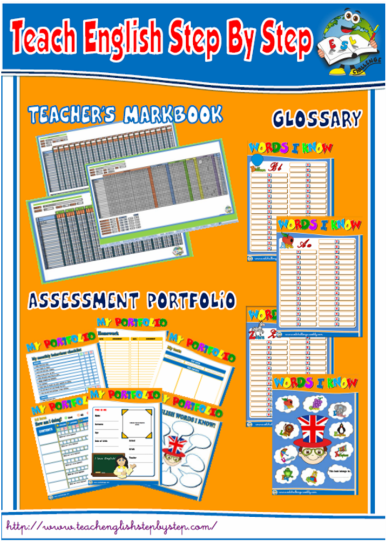Handy Facts On Deciding On Italian Nursery Teaching Aids
Wiki Article
What Information And Educational Material Do Kindergarten And Primary Schools Need?
In kindergarten and primary schools there is a wide range of educational materials and resources is needed to support the students' learning and development. Materials that are needed include Curriculum materials. These materials support the school's learning objectives. They can include textbooks, workbooks, lesson plans, and various other resources.
Classroom Equipment - For younger children, classroom materials like pencils, papers, glue, scissors, and other arts supplies are crucial.
Educational technology: In the current digital age, technological advancements in education such as tablets, computers and interactive whiteboards are able to improve learning and offer additional resources for students.
Books - The primary and kindergarten school needs a large selection of age-appropriate literature to encourage reading and the development of language.
Play with blocks, puzzles or games for your child to improve their spatial skills.
Visual aids like posters, charts and maps are all visual aids to help children learn and retain crucial concepts.
Music and art supplies- Materials such as paints, clay instruments, and music give children with an outlet for creativity while also encouraging self-expression.
Safety EquipmentIn order to protect the safety of your students and employees, it's essential to have materials such as emergency procedure posters and first aid kits as well as fire extinguishers.
Kindergartens and primary schools should have a range of educational and informational tools to help create an environment that is stimulating and safe for children. Have a look at the top sostegno scuola primaria for more advice.

What Is The Best Maths Teaching Support Material For Italian Kindergartens?
It is important to provide support for mathematics teaching materials in Italian nurseries. This can help children improve their spatial, numerical and problem-solving capabilities. Here are some examples of materials for math instruction: Training of caregivers and teachers. Both caregivers and teachers need to be trained on how to incorporate math concepts into everyday activities.
Plan of study and curriculum: Well-designed lesson plans and curriculum which incorporate mathematical concepts assist in ensuring that students get a broad exposure to mathematical concepts and abilities.
Visual and manipulative aids Manipulatives like counting bears, blocks, and beads, along with visual aids like charts and posters can help youngsters learn mathematical concepts in a an interactive and visual manner.
Tools based on technology such as tablets that have educational math applications and other games can be utilized to engage children and offer additional resources for their education.
Assessment tools can be useful to teachers and caregivers to monitor their children's growth and to identify areas in which they might require assistance.
Parental involvement: Involving parents in mathematics learning can help reinforce the concepts learned in the nursery and increase the involvement of families in the process of learning.
It is essential that the materials used in teaching mathematics to young children is appropriate for their age. The materials can be utilized by caregivers and teachers to design engaging and interactive math-related activities for children, which inspire their curiosity and love of education. See the best materiale didattico inglese for website examples.

What Are The Best Science-Based Didactics That Italian Nurseries Suggest?
Science didactic card can be great tool to teach young children the basics of science. Here are some scientific instructional cards you can consider: Animal Cards. Animal cards can educate children about different animals, their characteristics, and the way they behave. They can be illustrated with animals and their surroundings to make learning more enjoyable.
Plant Cards: Plant cards can help children understand different characteristics and plants. The cards can include illustrations of the plants as well as their stages of growth to help make learning more interesting.
Weather cards are a great method to educate children about the various kinds of weather, and how they affect the natural environment. They can also include pictures of various weather conditions including rain, snow and sun.
Space cards: Spacecards can help children understand the solar system and various planets. They may feature illustrations of planets as well as their distinctive features.
Human body cards Human body cards: Cards that focus on the human body can be used to help youngsters understand the different organs of the body and their purpose. They can feature illustrations of the different body parts and their functions.
It is crucial to select scientific didactics that are suitable for your child's age fun and engaging. Teachers and caregivers can to use these cards for exciting and engaging activities that stimulate children's interest in learning about the world. Follow the top rated materiale didattico scienze for website examples.

What Geography-Related Educational Cards Are Italian Schools Recommending?
Geography educational cards can be an effective tool to introduce children in Italian nurseries to basic geography concepts. Certain types of cards can be helpful to teach geography: Continents Cards: Children can learn about the continents around the globe, their places, sizes, and the natural features.
Country Cards: These cards provide children with information about various countries, such as flags, places languages, and other cultures.
Landmark cards are a great way to help your children understand the significance of natural features and landmarks from around world.
Animal-themed cards. These cards can enable your child to learn more about different animals around the world. They can also help them understand their habits food habits, diets, and other adaptations.
Weather cards. Children can use weather cards to learn about different types, and the effects they have on the natural environment.
Natural resource card: Children can learn more about the uses of different natural resources like forests and water.
You should choose cards that are engaging, appropriate for ages 0-12 and enjoyable for toddlers. These cards can be used by parents and teachers to create interactive and fun geography activities. These will help children develop their curiosity about the world, and increase their interest in learning. See the best schede didattiche geografia for blog examples.
